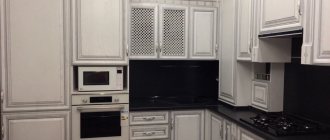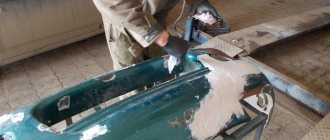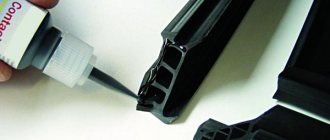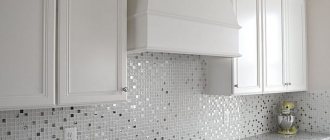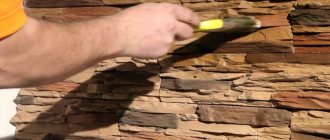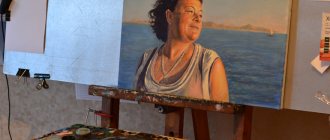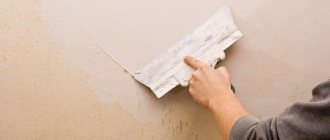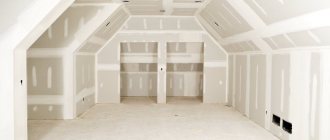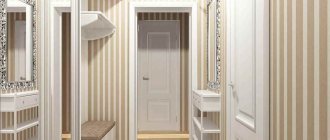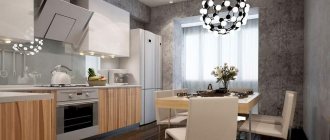When choosing a kitchen set, the first thing people pay attention to is the furniture fronts. In addition to a variety of colors, they have many performance characteristics, the main one of which will be the material. This criterion determines strength, hygroscopicity and thermal resistance, and also serves as a guarantee of the longevity of furniture groups and provides ample opportunities for interior design.
In this article we will try to consider what is better for the kitchen: plastic facades or those made of MDF and covered with film.
What types of kitchen facades are there?
Among the modern variety, most buyers are lost, not knowing what to choose. Natural wood undoubtedly has a lot of advantages, but is deterred by its exorbitant price. Its analogues, namely fibreboards, are now more in demand and popular than ever.
An option such as MDF or laminated chipboard visually looks no worse, and in terms of strength characteristics it is even better than wood. This is achieved thanks to special pressing and adhesives that firmly connect the wood particles to each other.
Samples laminated with paper-laminated composites
Plastic facade parts of furniture exhibits, the basis of which is chipboard material (chipboard), have a number of advantages compared to structures made from other materials.
At the same time, HPL plastic (laminated paper composite) serves only as a protective decoration and has nothing to do with polymers. The main advantages of this option can be considered:
- protective and decorative cladding made of various types of plastic has high wear resistance;
- The wood-paper, pressed composite used for external planes is not afraid of high humidity, temperature changes and exposure to solar ultraviolet radiation;
- cladding (decoration) is resistant to household chemicals, including fine abrasive cleaners.
As a budget option, façade structures with a particle board base are produced. More expensive products include facade elements made of Medium Density Fiberboard, laminated with plastics of different chemical composition and manufacturing technology.
Despite the high consumer qualities of sets made from furniture panels with protective and decorative lamination from a paper-laminated composite, they also have certain disadvantages, the main of which are considered to be:
- the surface with composite lamination is quite easily soiled, and even fingerprints are clearly visible on it;
- Matte plastic decoration requires special care.
The following types of plastic are mainly used as decorative and protective lamination of individual parts used for the manufacture of furniture placed in rooms with high humidity:
- Polyvinyl chloride film, characterized by a variety of textures and patterns, is quite resistant to contamination and the effects of cleaning agents and bit chemicals, the disadvantages of which include a low level of imitation of natural wood and peeling at high temperatures, which makes it unsuitable for the manufacture of countertops.
- Glossy or matte paper-laminated plastic (HPL plastic), which has excellent humidity and temperature resistance, is superior in color to polyvinyl chloride film, the disadvantage of which is considered to be high soiling and difficulty in removing various types of contaminants from its surface.
When choosing samples of this category, the following nuances must be taken into account:
- the use of sets with plastic, glossy outer planes visualizes the expansion of space, and matte panels give a feeling of home comfort;
- when purchasing specific models, preference should be given to samples whose ends of individual parts are protected with a post-forming edge, which increases safety from injury and more reliably protects the wood-based base from excess moisture;
- For rooms decorated in any interior design style, a good solution would be to use individual items with framed facade elements, where the main area is occupied by chipboard parts, and the frame is made of either an aluminum profile or veneered MDF board.
Plastic facades
The second most popular and no less visually impressive will be plastic.
Palette of colors and textures
Despite their synthetic origin, modern products made from this material have many advantages.
Advantages of plastic as kitchen facades
- Waterproof and completely hygienic.
- Do not fade when exposed to sunlight.
- Possibility of making curved contours.
- Relatively low cost.
- A large assortment of colors and the possibility of applying a drawing or photo to the surface.
- Glossy facades visually expand the space.
- Not susceptible to chemical influences from detergents.
- Easily washed off from grease stains.
But here, not everything is so smooth, because plastic also has several disadvantages, among which the main ones are the following.
Disadvantages of plastic facades
- Minor scratches will eventually ruin the monochromatic glossy surface.
- Matte plastic is quite difficult to wash.
- The glossy surface shows fingerprints and water stains.
- Relatively low strength against accidental impact.
- Cheap options can be slightly deformed during installation or due to thermal effects.
If you are ready to come to terms with the presence of such features of plastic facades, several important nuances will come to your aid on how you can correct some operational inconveniences.
What to choose?
To answer this question, you need to compare the materials:
- Price. The most expensive are enameled parts, followed by veneer, plastic and products with PVC film.
- Durability. Acrylic and enamel coatings lead in this category. Veneered ones require a certain humidity, and elements made of polyvinyl chloride should not be exposed to temperature.
- Wear resistance. According to this parameter, plastic and painted MDF stand out. The veneer is also quite durable because it has a protective treatment. PVC film is not so durable, but it is not easy to damage.
- Decorative. Although all products have visual appeal that allows you to create a beautiful individual interior, the painted facades especially stand out. Enamel can be laid on flat or textured surfaces, creating various effects.
When deciding what to choose, preference should be given to acrylic and HPL coatings. But the polyvinyl chloride surface should not be written off either, since in most cases the problem of peeling is associated solely with non-compliance with production conditions.
How to properly use plastic facades for the kitchen
- This material looks best in modern interiors. In classic kitchens, you can use imitation of natural materials, but the effect will not be the same.
- If you want facades with drawings, then it is better to place the drawings on the upper cabinets, so the kitchen interior will be more interesting.
- Glossy facades expand the space, while matte ones create coziness, so a combination of these two textures would be an excellent option.
- The edge located at the ends of the slab will be of great importance. The most reliable option would be postforming - when the ends are made of the rounded edge of plastic.
- An excellent solution would be to use frame facades. Usually this is either an aluminum profile or an MDF frame. Both options are practical, while the metal will last longer, and the MDF will not darken over time.
Despite the name, plastic is a heterogeneous structure. This is a thin layer of plastic coating, which is attached to the MDF board using a special technology. Film coating is often used for the same purposes.
Facade elements of modern kitchen furniture
Of course, external planes and countertops made of natural solid wood are an ideal solution for any category of furniture, but not every apartment owner can afford such luxury and is forced to choose one of the following options:
- painted MDF panels (Medium Density Fiberboard) boards;
- particle boards laminated with various types of plastic (plastic facades);
- exhibits made of MDF or particle boards covered with a special polymer (usually polyvinyl chloride) film with an additional protective and decorative layer.
Each of these options has its own pros and cons, however, despite the slightly higher cost, for a kitchen where there is constantly high humidity and temperature changes, products made from Medium Density Fibreboard, regardless of the characteristics of the decorative and protective cladding is preferable. At the same time, modern finishing products make it possible to create quite attractive pieces that are in no way inferior in aesthetics to products made from natural wood.
Kitchen facades made of MDF with film
This type of material is often confused with the plastic version, but there will also be a number of differences.
Features of film facades
- Despite the relatively thin layer, the film coating provides a stronger adhesion, and accordingly the surface acquires additional strength.
- It is impossible to make a relief pattern on plastic, while for MDF film, figured milling is almost a mandatory attribute.
- Compared to other materials, this option has less resistance to high humidity and temperature. Under significant thermal influence, the film can peel off, so placing MDF facades with film in the kitchen near the stove is not recommended.
- MDF boards made using outdated equipment or using handicraft methods are not of high quality, so it is advisable to choose products from more or less proven companies.
- Improper use or storage conditions can cause irreparable damage to the slabs.
Which of the proposed options to choose for the kitchen: plastic facades or MDF, on the surface of which a film is applied, is better for you to decide. The strength indicators of both materials are quite good, as are the performance characteristics. Additional advantages of plastic will be a wide range of colors and the ability to apply custom images.
An important advantage of film facades is their affordable cost and the ability to make furniture yourself. Plastic options are more practical and resistant to extreme kitchen conditions.
What is the difference between chipboard and MDF: features of production and processing ↑
Budget materials for the kitchen facade are slabs made of wood chips and fibers. Commercial markings: chipboard and MDF. Despite the fact that both types of boards are made from crushed wood, their characteristics and performance differ.
Kitchen: MDF facades with film
The difference in structure is visible to the naked eye
What is a chipboard: characteristics ↑
When choosing which façade is best for the kitchen, buyers, focusing on low cost, give preference to chipboard. Particle board is made from waste from the wood processing industry.
Wood shavings, specially crushed, are filled with an adhesive composition. Among the ingredients are synthetic resins, which melt under high temperatures and glue the chips together. The material filled with resin is pressed under high pressure.
Internal structure of the slab: heterogeneity of particles and cavities
As a result, a fairly strong slab is obtained from a mixture of wood chips and glue. Slabs of different thicknesses are formed depending on the purpose - from 5-6 mm to 5 cm. The finished slabs must be sanded until the surface is completely smooth.
Budget is the main advantage of the material. There are many more disadvantages:
- The internal structure of the slab is heterogeneous.
- It is impossible to form a textured surface, the slabs are only smooth.
- Difficult to process, the material chips easily.
Chipboard with finishing coating
The main disadvantage is the release of formaldehyde compounds into the air. The material does not tolerate moisture well and swells when wet. The surface and edges must be covered with film or laminated - this reduces the risk of harmful substances entering the air.
MDF: how and what facades are made from ↑
MDF facades - what is it? MDF is a board made from wood fibers. Instead of shavings from production waste, finely dispersed wood fibers are used for production. The fibers also bond under pressure when exposed to high temperatures.
MDF board section
The fundamental difference is in the production process. Synthetic resins are not used in the manufacture of MDF boards. When the fiber mass is heated, natural resins are released that glue the particles together. Paraffin or lignin is used as an additional adhesive composition. These substances melt and fix the fibers in the internal structure. This production method allows you to obtain a material that is not a source of evaporation of harmful substances.
Advantages:
- Affordable price.
- Ease of processing.
Bent MDF Kitchen Cabinet Doors
- Possibility of creating bent shapes and fine milling.
Fine processing: framed facades, milling and texture
- Environmentally friendly.
Which material is better for a kitchen facade: advantages and disadvantages of slabs ↑
The answer to the question of which kitchen is better to choose is clear. If you have to choose between budget chipboards and MDF, give preference to MDF. The difference in price is small, but such a facade will last much longer.
Chipboard facades with film
An exception can be made only for laminated chipboards, which are used as inserts in an aluminum profile. It is the edge parts of the slabs that are most vulnerable to water ingress.
MDF options with film
Do not use standard chipboards covered with paper film for installation as a countertop. In the places where the sink is embedded, in a couple of years unesthetic waves will appear, and the top decorative layer will simply peel off from the base.
Chipboard can be used to make cabinet frames, side parts of cabinets, and shelves.
How to choose a kitchen environment?
The fashion for minimalism in the interior does not require lush decorations and bright colors. Natural textures and colors look great on facades with any surface. But the features of the materials add comfort and help balance the space:
- Gloss visually enlarges the room, but the matte effect contributes to coziness. The combination of such decors is universal.
- The edges of doors, tabletops, and drawers are of great importance in the use of furniture. Maximum durability is ensured by postforming with a rounded end.
- Frame structures made of aluminum or MDF are practical, especially in the film version.
The question of choosing between film and plastic is only a matter of design possibilities and a small difference in cost. Therefore, it is better to pay attention to the parameters, stylistic correspondence, design features and modern fittings.
Natural compromise: wood veneer
Veneer is a very thin cut of wood, which, like wallpaper, is used to “envelop” the base for the facade. A layer of varnish or enamel is applied to the surface of the veneer, which makes it easier to care for the coating.
visually the facade resembles an array, but will not be so expensive;
veneer can be tinted in any color - there is freedom in choosing the color scheme of the kitchen.
high price. Of course, facades with veneer are cheaper than solid wood, but the price is influenced by the type of wood used: veneer of beautiful and rare zebrawood wood will cost more than ash;
difficulty of operation. Veneer retains some of the properties of solid wood: in a very humid or dry room it may swell or delaminate over time;
unstable color. Over the years, the surface fades if it is exposed to direct sunlight.
